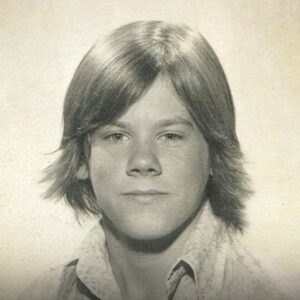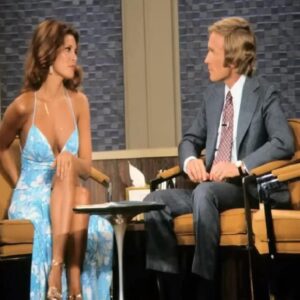In March of 1993, while filming a scene for “The Crow,” a “blank” gun backfired and Brandon Lee, the charming son of Bruce Lee, died on set.
The film opened a year later – May 13, 1994 – to box office success. What surfaced is both a muscular tribute to Lee and a monumental comic book movie.
Like the James O’Barr graphic novel it’s based on, “The Crow” is a heartbroken love letter to those gone too soon. It’s also startlingly violent, nightmarish and depicts a musician embracing vigilantism in order to exact revenge.
At times, the schizoid tone clashes, with genuinely tender scenes coming right after gruesome fight sequences. In the hands of director Alex Proyas (in his stunning film debut), it’s a work very of its time (’90s music video tropes and a nihilistic attitude permeate in every scene).
The film also clearly influenced dozens of works that followed.
The Crow (1994) Official Trailer – Brandon Lee Movie HD
Lee stars as Eric Draven, a rocker who, along with his fiancée, is murdered by a gang. A year later, Draven is brought back to life by a supernatural crow and, donning what resembles Alice Cooper’s face paint design and an all black attire, he hunts for his killers across a diseased city.
Ferocious, relentlessly grim and often exciting, “The Crow” was a shock to the system in 1994. Arriving in the same season as “Cops and Robbersons,” “When a Man Loves a Woman,” “Maverick” and “The Flintstones,” there was nothing else like it. Warner Bros. had hit pause on the Batman franchise and non-Marvel/DC comic book movies mostly consisted of the colorful likes of “Dick Tracy” and “The Mask.”
Our first look at Draven is the haunting image of Lee emerging from a coffin during a rain storm, clawing his way through clumps of mud, crying and howling. It’s a startling introduction, not only in the way the protagonist is introduced but how the film itself boldly presents itself as Lee’s final work, without shielding us from the tragedy surrounding it.
While the footage of Lee being shot in real life is thankfully not in the film, Proyas reportedly reshaped the film somewhat, allowing for the mournful love story to take center as much as the action/horror elements.
Like Terry Gilliam’s “The Imaginarium of Doctor Parnassus” (famously reconstructed and belatedly completed after the death of its star, Heath Ledger), the result is a skillfully made fantasy and a showcase for a penultimate performance that deserved an audience.
The promotional materials pushed it as Lee’s last film (tellingly and respectfully, there are no opening credits, only the words BRANDON LEE and THE CROW). The curiosity factor, soundtrack and the novelty of its gothic horror look may have been enough to open it but its duration as a major sleeper led to a fan following and influence that has never depleted.
Looking strictly at the film’s monetary impact as a surprise blockbuster from a studio that salvaged it (Miramax distributed it after Paramount passed), “The Crow” is a genre gatekeeper. It’s impossible to imagine the R-rated, adult-minded and intentionally sleazy “Blade” (1998) or “Sin City” (2005) becoming accepted were it not for Proyas’ film to introduce this type of hybrid first.
The 1997 “Spawn” and the darker comic book films of the past twenty years (including Christopher Nolan’s Batman trilogy) also feel akin to the uncompromised anarchy of “The Crow.”
The Crow (1/12) Movie CLIP – Murder Flashes (1994) HD
In ways that work to the film’s advantage, Lee’s performance is strange. At times, there’s a rawness to his work that moves you. Yet, he’s also visibly having fun (note how he sometimes breaks into a little dance) and, likely sensing how bleak the film would become, injects as much humor into the role as possible.
The one-liners always work when they come from old pro Ernie Hudson, who brings a lived-in gruffness to his performance as a compassionate cop. Lee nails the lines that inspire chicken skin (“Victims…aren’t we all?”) but has less success with the quips (telling a blasphemous joke during a killing spree is awfully tacky).
If his take on Draven is inconsistent, it might be that he was experimenting with the role, finding ways to make him less a clown-faced vigilante and more akin to an impish, if tortured, Grim Reaper.
The establishing aerial shots of the film’s locale naturally evokes the design of “Blade Runner.” However, rather than looking at what came before, a sharper contrast is provided when we consider what came after.
“The Crow,” with its dark, wet streets, ongoing rain storms, city dwellers oozing around dark corners like vermin and sickening characters capable of human atrocities, feels like a pre-cursor for David Fincher’s “Seven,” which arrived the following year.
The unnamed city where the action takes place is so thoroughly filthy and rife with out-in-the-open evil, it makes Gotham City (in all its cinematic interpretations) seem pleasant in comparison. In fact, I doubt a middle-aged man, dressed in a bat cowl and cape, would stand a chance against the antagonists here, let alone Eric Draven.
The Crow (4/12) Movie CLIP – Gideon’s (1994) HD
Proyas intermittently uses slow motion or freeze frames at random times, an approach that signals back to the early works of John Woo. The Woo influence is especially evident during the thrilling boardroom shoot out, which approaches the unleashed nihilism of the hospital showdown in Woo’s 1992 masterpiece, “Hard Boiled.”
While the very-early digital effects are all-too-easy to spot, they still look good and serve the film’s surreal approach. Considering how Lee’s death left many scenes unfinished or in need of the late actor, its remarkable how the editing, a few effective computer placement effects, shadowy lighting and a well placed double create the illusion that Lee is in nearly every scene.
As a gothic fairy tale, it plays fast and loose with its murky rules and lore: exactly how the crow aides, guides and empowers Draven is never clearly spelled out. On the other hand, there’s Gabriel, Draven’s cat, found neglected in Draven’s crime scene apartment after a year of neglect; the movie seems like it wants to tell us how the cat is still alive then drops the issue.
The villains are colorful, deranged moral voids whose corrupt code and sadism brings to mind the monsters who slaughtered Alex J. Murphy in “RoboCop.” Leading the bad bunch is a fantastic Michael Wincott, playing a kingpin with an aristocratic manner of dress and authority but a sadism he can’t eclipse.
Having Wincott, Bai Lei, Tony Todd, the always fun-to-watch David Patrick Kelley and Jon Polito as the central killers proved inspiring. So was making Hudson and an effective Rochelle Davis (playing Sarah, Draven’s only remaining friend) the film’s emotional center.
The Crow (6/12) Movie CLIP – Here, Funboy (1994) HD
While the staggering volume of bloodshed will make this a tough sit for those with weak stomachs, adventurous filmgoers will relish the vividness Proyas has made of O’Barr’s creation.
If the film’s justly celebrated soundtrack is a key to the film’s legacy, ongoing efforts to monetize “The Crow” have been appreciably shot down. Few sequels are as bad as the 1996 “The Crow: City of Angels,” though “The Crow: Salvation” (2000) and “The Crow: Wicked Prayer” (2005) come close.
Efforts to produce a remake pop up every few years, then go away, which is for the best. As a film that enriches and broadened the possibilities of comic book cinema, “The Crow” is a milestone. Eric Draven’s story, as embodied by Lee’s iconic turn, is the only one that needed to be told.






